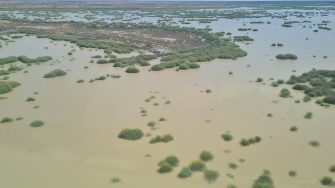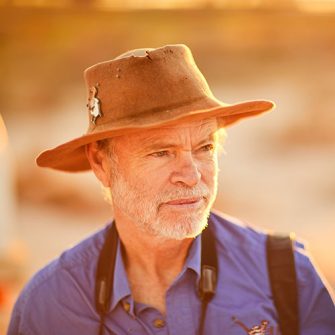
Date: Monday October 10th 2022
Project: Eastern Australian Waterbird Survey
Observers: Richard Kingsford & Paul Wainwright
Pilot: Tim Dugan
Today we had a short day, giving us a chance to catch up on a few jobs. It was a stunning morning surveying some of the best wetlands in eastern Australia, including the flooded Bulloo Lakes at the end of the Bulloo River.
We were treated to a lovely morning down on the Bulloo River with its full channel flowing.
Day 7 of survey started as we headed down the Bulloo River, picking up some of the flooded wetlands on its floodplain.
The Bulloo River was high enough for its distributary creeks to run onto the floodplains.
It was here we observed a reasonable density of waterbirds, including glossy ibis, plumed whistling-ducks, grey teal and pied stilts as well as Pacific herons. Some of these species must really like the newly flooded areas.
Even though there was a reasonably strong flood in the Bulloo, and the distributary creeks were overflowing, the Bulloo itself still hadn’t got high enough to really spread across the floodplains. This may change given the amount of water we saw up around Quilpie when we surveyed there.
Surveying the Bulloo River.
The Bulloo River had very few waterbirds, just the odd pelican.
The Bulloo River is a very picturesque river, with its red rock bars, but they were mostly underwater today.
In some places, the Bulloo cuts through the sand dunes creating almost small cliffs overlooking the river.
Eventually the Bulloo River peters out into several small channels which run through to the Bulloo Overflow and the two more permanent lakes.
Surveying the two more permanent Bulloo Lakes.
These two lakes can be amazing when they are full and the islands are well established. Given the flood, I would not be surprised if these lakes really take off in terms of waterbird numbers and diversity.
Surveying one of the Bulloo Lakes.
Today there were very few waterbirds but many signs for great things to come. There were a few swans, coot, grey teal and hardhead. And there was a colony of about 550 straw-necked ibis and perhaps up to a hundred white ibis breeding.
Breeding colony of ibis on the Bulloo Lakes.
We ended the day at Tibooburra to refuel. This country has had a lot of rain and the flowers are fabulous.
Paper daisies.
Button daisies.

